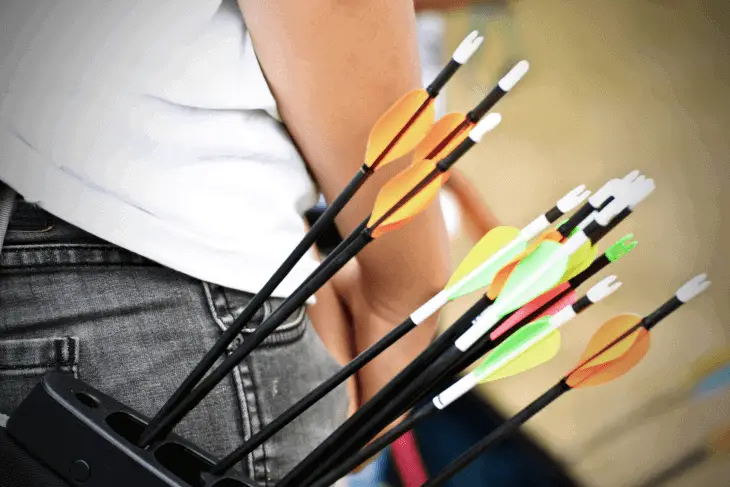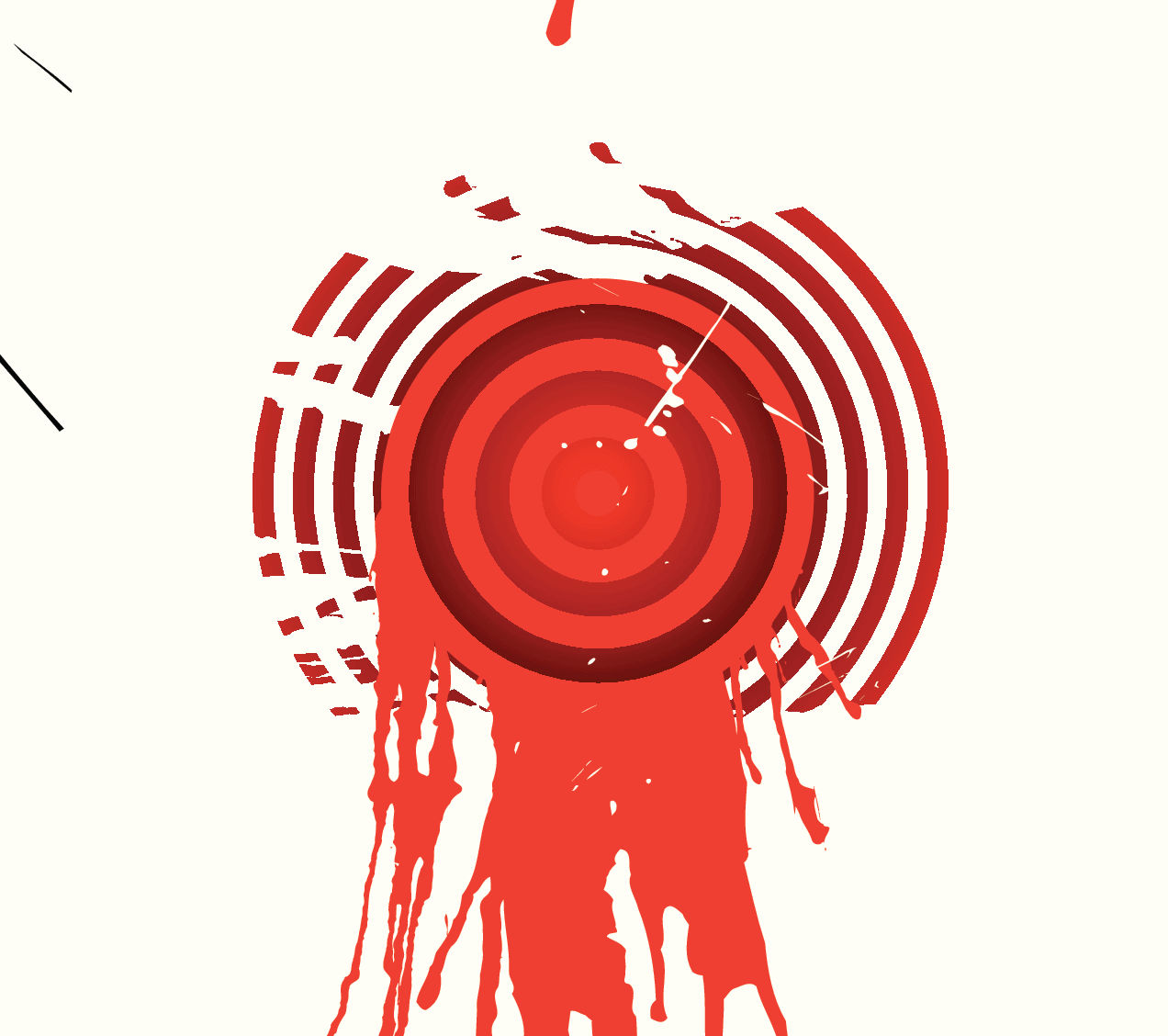If you’re a parent, you’ve probably said the following to your kids, over and over (and over and over) again: “the rules aren’t fun, but they’re there to keep you safe.” It’s something kids need to learn, and as adults—particularly as adults who do archery—it’s something we need to remember. Without rules, archery could be a seriously dangerous sport.
So, here are the rules that most archery ranges enforce. These aren’t federal regulations, or anything like that, and the rules at your local range may (and probably do) differ in a couple of ways. The rules below are a good starting point to keep you safe and shooting well, and we’ve split them up into four different categories: general rules for all activity at the range, rules while you’re shooting, rules for kids, and rules that some (but maybe not other) archery ranges will have. We’ll start with…
General Rules and the Range
As we go through these, keep in mind: the folks who run the range aren’t trying to be strict jerks; they want to keep you safe and happy, so that you 1) don’t do something stupid and try to sue them, and 2) keep coming back to pay for more lane time.
So, before you start, you may want to…
Take the Intro Course
Lots of ranges have a required intro course that you are required to take before you’re allowed to shoot anything at all. It doesn’t matter if you’re a newbie or an Olympic archer—if the range requires an intro course, you’ve got to take it (and we imagine that’s for insurance purposes—whoever provides the range with insurance requires them to have an intro course).
If you’re visiting the range for the first time, it can make sense to call ahead and see if they require you to take the intro course.
Listen to the Staff Member Running Things
This is an important one: listen to the range official barking out orders. When he/she says “Bows up” (or whatever—we’ll talk about lingo in a minute), you’re clear to nock an arrow; when he/she says “Bows down,” you put your bow down, regardless of how many arrows you have left in your quiver. The official running the archery range is person in charge, and he’s been specifically trained to observe the range in a way that keeps you safe, so whatever he/she says, goes.
Sometimes, there will be a number of different range employees calling the shots, and you may not be sure who’s who—so ask. Whenever you don’t know something or understand something, ask. While it sounds like a punchline, when it comes to safety, there really are no stupid questions.
Learn the Lingo
Every archery range has its own set of terms, and you’ll need to know them. If the range has a required intro course, they’ll go over the commands, so pay attention. Very often, they’re pretty simple—something like “Step to the line and draw” or “Bows up, clear to practice” and then “Step back from the line” or “Bows down, clear to retrieve your arrows.” Range operators make the commands clear and concise, because they want to be easy to hear and easy to remember.
No Running and No Horseplay
Ideally, you want your archery range to be a calm, orderly place, and most ranges have a “No running” and “Zero horseplay” rule. This one may be a little simpler for adults, but harder for the kids. Still—very important.
No Medications That Make Your Drowsy or Loopy
If you’re on medications that impair your judgment or ability to activate machinery, those are medications that should disallow you from visiting the range, and a lot of clubs have rules regarding them.
And, obviously, no alcohol. If you’re at a range that’s serving drinks, you may want to start looking for a new range. Actually, you definitely want to start looking for a new archery range.
No Loose Clothing
This seems trivial, but it’s an important one—loose clothing can get stuck in a bow string and send arrows flying in unwanted directions. The same goes for jewelry, necklaces, earrings, and so on—all must be taken off. Long hair is usually required to be pulled back into a ponytail or a bun.
Wear Appropriate Protective Gear
Usually, this refers to arm guards and fingers tabs/shooting gloves. Arm guards go on your bow arm, and protect your forearm from the bow string—very often, particularly for new archers who are working on their form, the bow string can slap against the inner arm, and that is SURPRISINGLY painful, and can result in some very serious bruising. Finger tabs/shooting gloves are for the hand you put on the bow string when you pull it back, and they’re mostly used by archers shooting a recurve to protect their fingers.
Check Your Gear Before Shooting
This is a good idea, regardless of whether you brought your own bow or you’re renting a bow from the range. Look at the riser to make sure it’s intact, and there no cracks or nicks in it, and that the grip is securely attached, and look at the bow string to make sure it’s not frayed or lumpy-looking. Do the same for your arrows—look for cracks in the shaft, missing fletchings, and loose arrowheads. If you find anything wrong with you bow or arrows, don’t shoot—go to the archery range official and see what they think.
We wrote a long post about bow maintenance and how to review your bow for problems, and you can check that out if you want to learn more.
If You’re Using a Recurve…
Use a bow stringer to attach your bow string to each limb. The “step-through” method is quicker, but it’s dangerous, and a bow stringer is specifically designed to safely let you string your bow.
If you need guidance on how to do so, we’ve written a post all about how to use bow stringers.
Report All Injuries to Staff
You’d obviously report large, painful injuries to staff, but you should also report smaller issues, too. Small injuries can affect your shot and send your arrows in unpredictable directions, and your range official will know what types of injuries are a small deal and which are a big deal.
Archery Range Rules Related to Shooting
So those are the “general” rules that most ranges enforce. There are a different set of rules that govern your actual shooting time, and they include:
Arrows Must Remain in Quivers Until OK’ed for Nocking
Until you get the OK from the official running the range, keep your arrows in your quivers. If you nock an arrow before you’re supposed to, prepare to get yelled at.
If There’s an Arrow on the Bow, It Must Be Pointed Downrange
As with any kind of marksmanship, the following rule applies: “Only aim at things you want to hit.” Archery may be a hobby, but a bow and arrow is a weapon, and it is extremely important that you only aim at your targets downrange when you have an arrow on the bow.
DON’T CROSS THE LINE
This is another rule where, if you break it, you will be yelled at, and yelled at loudly. When you’re on the wrong side of the shooting line, you’re in danger of being impaled by an arrow. So don’t cross the line, ever, until your range official gives you the OK.
Most people intuitively understand this, but you’d be amazed at how often they DO CROSS THE LINE, because they forget the following rule that most archery ranges have:
If an Arrow Falls Over the Line, Leave It There
Very often, you’ll be nocking an arrow, and it’ll fall on the ground on the other side of the line. If that happens to you—and it happens all the time—leave it there. Do NOT bend down and get it. That’s a no-no, and it’s another rule where the range official is going to yell at you loudly (and in front of everyone) if you reach over and pick it up.
This can happen to archers using any type of bow, but it’s a little more common with archers using a recurve. Most recurve bows feature an arrow rest that doesn’t secure the arrow, whereas compound bows usually feature a containment rest/whisker biscuit, and that does a better job of holding arrows in place.
Regardless, be aware that no matter what kind of bow you’re using, if you drop an arrow on the ground, LEAVE IT THERE. Ranges are really strict about this rule.
Don’t Shoot Broadheads or Razor Tips
This is another rule that almost all archery ranges feature. It’s not that ranges don’t want to encourage hunters—it’s that broadheads can do some major damage on a target! Which is, of course, what they’re designed to do.
So, because ranges don’t want to have to buy new targets every time a bowhunter comes in, they have “No Broadheads” rules.
No Dry Firing—Especially Rentals!
“Dry firing” refers to pulling back the bow string and releasing it when there’s no arrow nocked. It’s a big no-no, because it can 1) destroy the bow, and/or 2) snap the bow string and/or bow cable. If you go on YouTube and look up “dry fire,” you’ll see plenty of videos of archers ruining their bows.
So, obviously, archery ranges don’t want you dry firing, because it can ruin the rental equipment you’re using, but moreso because it’s dangerous. When you dry fire and the bow and/or bow string falls apart, and can projectile outwards and hit someone. It can be incredibly dangerous—it’s not far-fetched to imagine someone being blinded after a dry-fire—so don’t do it.
Keep It Quiet While Shooting
Have fun, but don’t be loud. Most new archers seem to get this, but be prepared to be shushed if you’re on the line and making too much noise, or if you’re off the line and in the background and being too loud.
Shooting Rules for Kids
Kids have to obey all the rules above, but there are other kid-centric rules that most ranges enforce, including…
Children Under 18 Must Be…
You know the rest. Accompanied by a parent or a legal guardian. The only time that may not be true if the range is running classes or lessons, and in that case, you should ask the person in charge whether you can leave.
Don’t Cross That Line!
We mentioned this one earlier, but we’ll mention it again, because we’ve seen this happen: a kid is trying really hard. Doing his or her best. Really giving it his all, and then BAM! Bullseye! The kid gets all excited and runs to retrieve his arrow—while everyone else is still shooting, and you, as a parent, experience your first heart attack.
There are a lot of rules you need to tell your kids, and make sure this is among them.
Parents Must Stay Behind the Line
This can be tough—very often, if you’re an experienced archer and you see your kid using safe-but-less-than-perfect form, your inclination is to approach him or her on the line and provide guidance. Wait until the round is over. Approaching the line is a distraction, and a distraction-free zone is almost always safer than a distraction-full zone.
Shooting Rules at Some Locations
We’ve been to a lot of archery ranges over the years, and you’ll find the rules above at most of them. The rules in the following section, though, seem to be enforced in some locations, but not in others. They include:
Cell Phone Use is Restricted / Not Permitted
This one’s tough to enforce, because basically everyone under the age of 35 is on his or her phone at all times, day and night. Got a bullseye? Take a picture. Got a grouping? Take a picture. Miss the target altogether? Frowny face emoji, take a picture.
If your range has rules about phones, they’ll let you know.
No Crossbows
This is another range-by-range rule, but it seems like many archery ranges don’t allow crossbows, and that most ranges don’t allow pistol-style crossbows. If you’re a crossbow user and you want to get some practice in, call ahead and make sure crossbow use is allowed, because that’s not always the case.
Don’t Draw Toward the Ceiling
Some archers have a draw where their bow arm isn’t perfectly parallel with the floor, and when they’re pulling the bow string back, their bow arm is point above the target. Some ranges don’t care too much about this, but the concern is that you’re going to let an arrow go before it’s fully drawn, and it’s going to hit a light / the ceiling / something that’s not the target. So the range rule is “don’t draw towards the ceiling.”
By the way—that draw that lists toward the ceiling is sometimes indicative that the archer is “over-bowed,” and using a bow with a draw weigh that’s too heavy. It can make sense to experiment with a lower draw weight, and see if the draw looks any cleaner.
No Private Coaching Allowed
This is another range-by-range rule. Some ranges welcome outside coaches to come in and provide guidance; in other places, it’s a strict no-no, and they want you signing up (and paying for) the classes they offer. This is another one that you should call ahead and ask about—it’s a bummer if you pay for a coach, have him meet you at the range, and then find out you’re not allowed to toe the line.
And… there you go! Those are the most common rules you’ll find at most ranges, with a little extra information thrown in for good measure. Before we wrap up, you should consider…
The Rule You Should Always Follow
“Be safe, and if it’s dumb or dangerous, don’t do it.” A good rule for the archery range, and a good rule for life.
And that’s mainly what all the rules are geared towards: safety. Have safety at the front of your mind at all times, be observant at the range, and if you see someone doing something dangerous, SPEAK UP. If you need a guiding principle, it’s “Safety First.”
One more thing, before we go: if you want to learn more about some of these rules, check out our “Commandments” section in the sidebar. We go in-depth about certain rules, why they’re really important, and how they relate to your development as an archer.
That’s it for this post. Have fun, and be safe!




